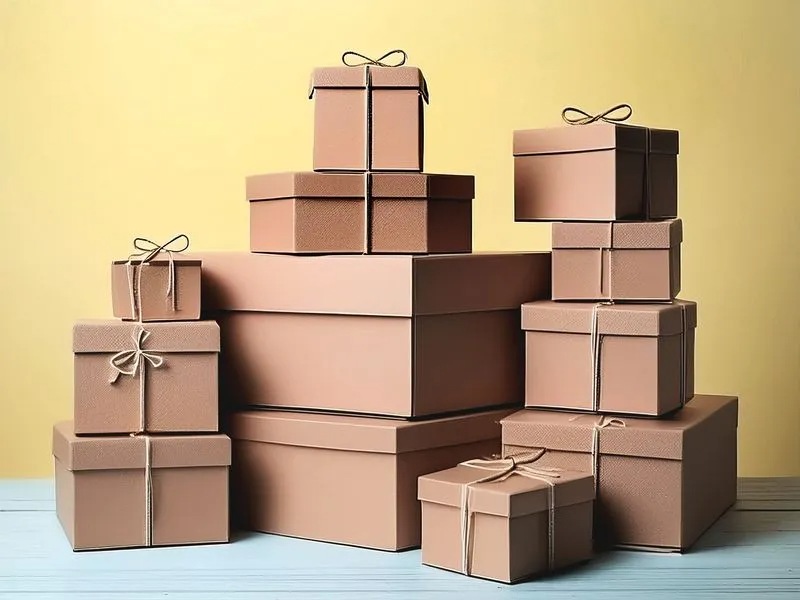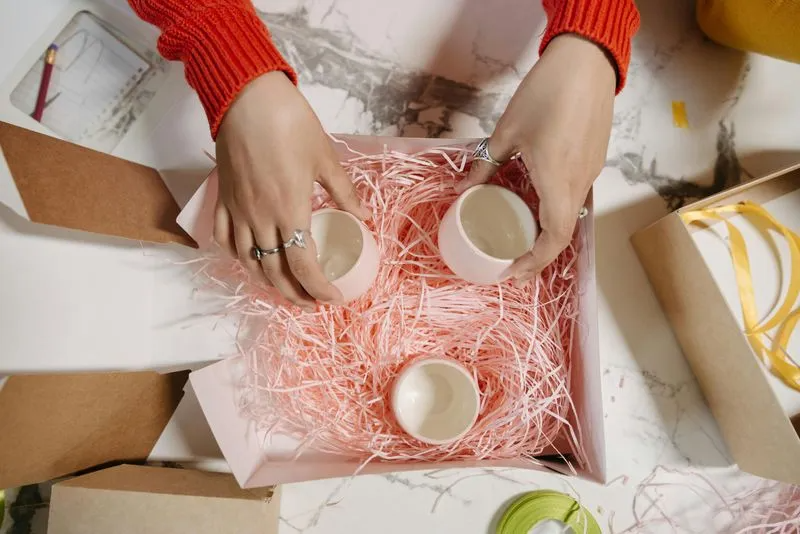Find out what type of packaging box is best for your brand.
Beyond being a vessel that protects your product during shipping, packaging boxes serve as salespeople that you place on store shelves. But with so many box types available, choosing the right one can feel overwhelming.
But don't worry. We've got you covered.
In this guide, we'll delve into the world of packaging boxes and discuss some clever ways to select the perfect fit for your brand.
Let's get started.
Corrugated Cardboard Boxes: The Workhorses of Packaging
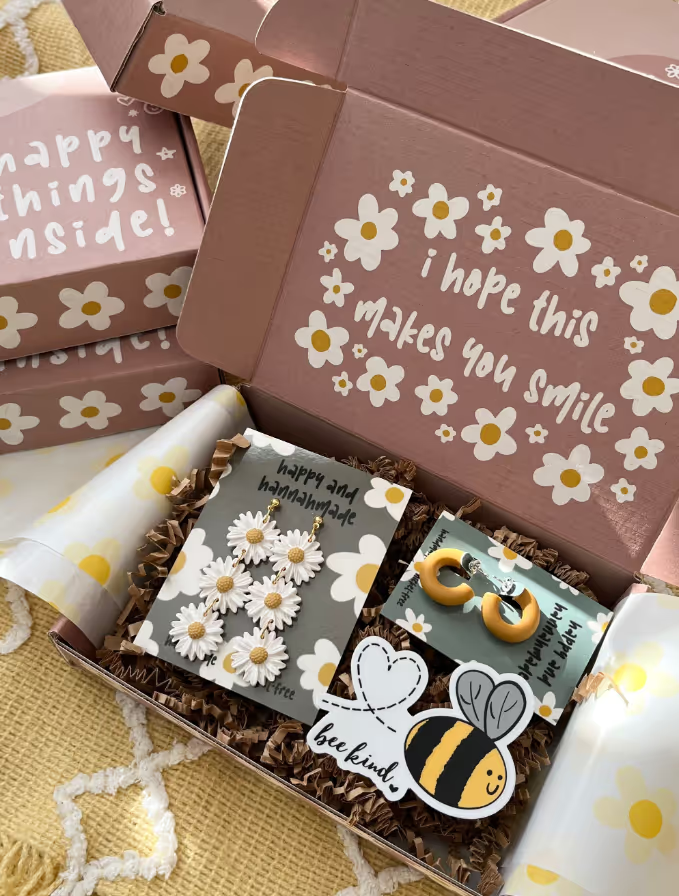

Corrugated Mailer Box by Happy and Hannahmade
Corrugated cardboard boxes—often simply called cardboard boxes—are industry staples. You'll see them everywhere, from towering stacks in warehouses to the familiar brown boxes on your doorstep.
Why should you use cardboard boxes?
Cardboard has a wavy inner flute sandwiched between two flat liners. This ingenious design creates a lightweight yet incredibly strong structure. That makes cardboard boxes ideal for protecting your products during shipping, even for long distances.
Popular Types: Mailer Boxes, Shipping Boxes, Shoe Boxes, Pizza Boxes
Cardboard Boxes Are Great for Branding
Corrugated cardboard is a fantastic canvas for branding and marketing messages. Use these boxes to add your business details and provide product information.
You can be creative with your designs. Beyond size and shape, corrugated boxes can be customized with inserts, partitions, linings, and printing to match your product and brand identity perfectly. This level of customization allows you to create a unique unboxing experience that elevates your brand image and delights your customers.
Cardboard Boxes Are Practical
Compared to other packaging materials like wood or plastic, corrugated cardboard is a remarkably affordable option. This is especially important for small businesses or those with high shipping volumes. The lightweight nature of cardboard also translates to lower shipping costs, as you're not paying to transport unnecessary weight.
Cardboard is an eco-friendly material. It's often made from recycled paper content. This makes it a great choice for businesses that want to minimize their environmental impact. In addition, customers can easily recycle cardboard boxes after use. This helps reduce their environmental footprint.
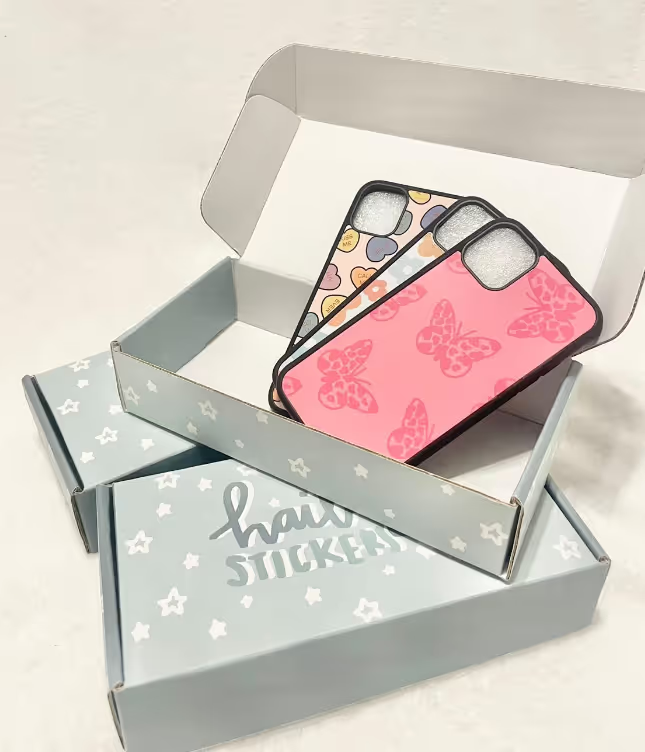

Mailer Box Design by Hailey's Stickers
The flat design of corrugated boxes maximizes space utilization, making them efficient for stacking and storage in warehouses. This is crucial for businesses that manage large inventories or have limited storage space.
Paperboard Boxes: The Colorful Champions of Retail
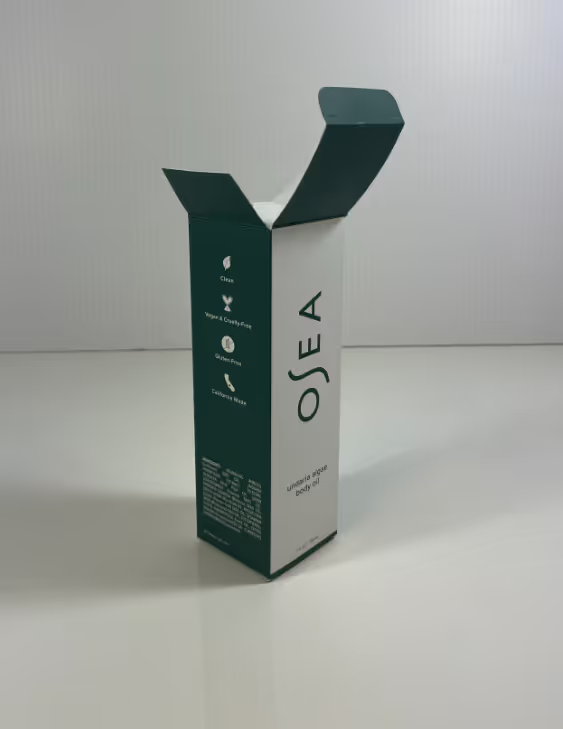

Paperboard boxes—also known as folding cartons—are the vibrant stars of retail aisles. You can't use them to ship products directly to customers. However, this packaging material can easily draw anyone's attention to your merchandise.
Popular Types: Product Boxes, Pillow Boxes, Cube Boxes
Folding Cartons Are a Branding Powerhouse
Folding cartons are made from thin (yet surprisingly strong) paperboard material. These boxes offer a blank canvas for stunning graphics and branding elements.
Unlike corrugated cardboard, the smooth surface of paperboard provides exceptional print quality, allowing for high-resolution logos, photos, and marketing messages. This makes them perfect for showcasing your products on store shelves and grabbing customer attention in a crowded marketplace.
You can create a visually cohesive brand experience that entices customers to pick up your product to learn more about it. You can include information about your company's story, highlight product features and benefits, or even add special offers and coupons.
This allows you to connect with potential customers directly at the point of purchase and influence their buying decisions.
Folding Cartons Are Made to Be Displayed
Paperboard boxes come in different shapes and sizes. Beyond the standard rectangular box, there are options for gable boxes, pillow boxes, and trapezoid boxes — just to name a few. This versatility allows you to create unique and visually interesting displays that can help your product stand out on crowded shelves.
You can maximize your shelf space by stocking more boxes as folding cartons take up less room. Its lightweight and stackable nature makes it easier for employees to handle these boxes. That means restocking shelves shouldn't be an issue.
It helps that folding cartons are affordable. This makes them a budget-friendly solution for startups or small businesses.
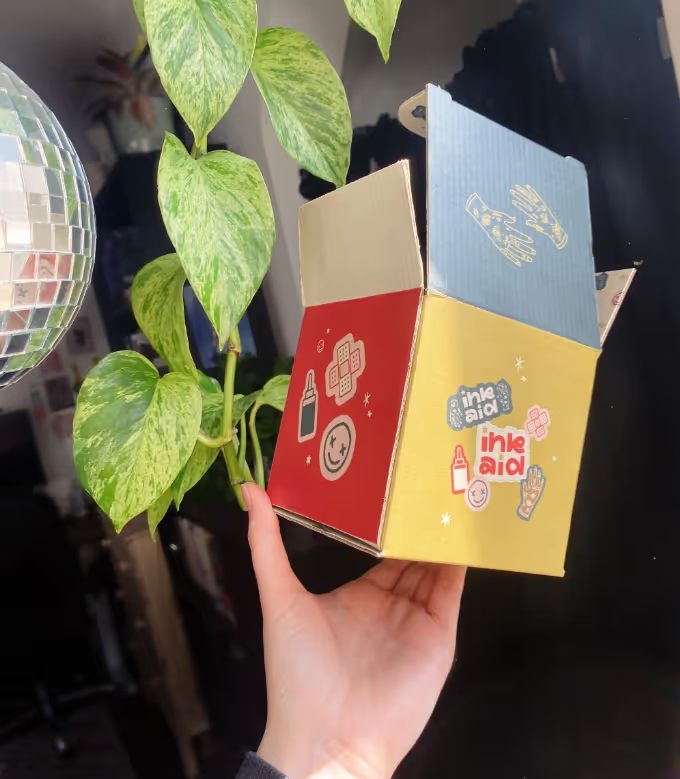

Product Box by Olivia Lee Studio
The lightweight nature of paperboard also translates to potential cost savings on shipping. How? It's possible to ship products stored inside folding cartons using poly mailers which are lighter than cardboard boxes.
Rigid Boxes: Make a Statement
Rigid boxes—also known as presentation boxes—exude an air of sophistication and luxury. They're the crown jewels of packaging, often housing high-end electronics, jewelry, or other premium products.
Here's what sets rigid boxes apart from other packaging materials:
- Unmatched Protection — Rigid boxes are built to impress and safeguard. Constructed from thick, sturdy materials, they provide exceptional protection for your most valuable products.
- Premium Presentation — The rigid structure allows for intricate designs, embossing, and high-quality printing. This creates a luxurious unboxing experience that elevates your brand image and leaves a lasting impression on customers.
There's no denying the impact of rigid boxes. However, these can be quite expensive. If you're just starting out, this packaging material might not be the best option for your company at this point. In addition, their non-collapsible design can lead to higher shipping costs due to the increased volume.
Choosing the Right Box: It's All About Your Brand
Now that you've explored the three main box types, it's time to find which type of packaging you need. Consider these factors to make an informed decision:
- Product Needs — Do you need boxes for shipping? Or are your boxes going on store shelves?
- Brand Identity — What image do you want to project? Corrugated boxes offer practicality, paperboard boxes boast vibrancy, and rigid boxes scream luxury. Choose the box that aligns with your brand's personality.
- Budget — Corrugated boxes are the most cost-effective option. Rigid boxes come at a premium. Factor in your budget when making your choice.
Conclusion
Remember, the perfect box isn't just about functionality; it's an extension of your brand. It silently speaks to your customers, reflecting your values and the quality of your products.
So choose wisely. If you need help deciding, give us a call.
Here at PackM, we understand the importance of customization. We use top-quality, lightweight, and durable box materials for our custom packaging solutions.
This allows us to create bespoke mailer boxes, shipping boxes, product boxes, and even custom shoe boxes — all tailored to your specific needs and branding.
You can reach PackM by phone or live chat. You can also email us at sales@packm.com
Related Posts
